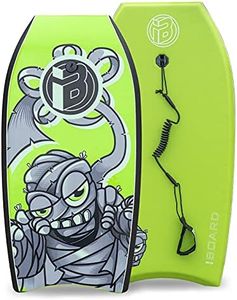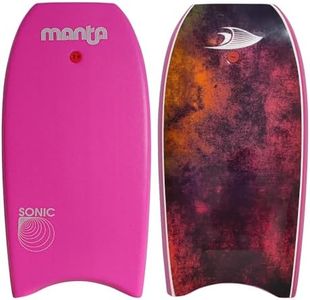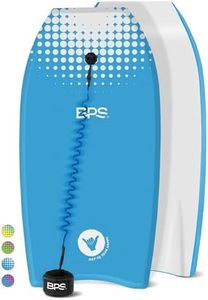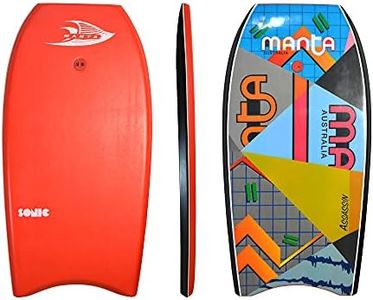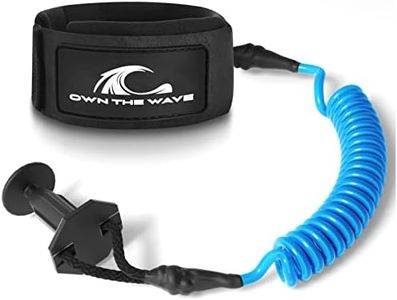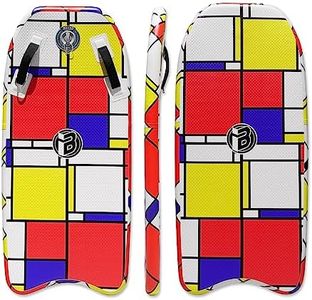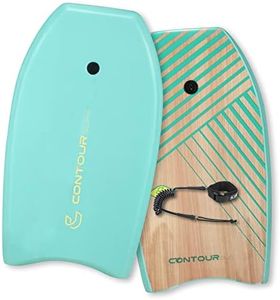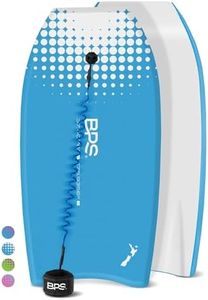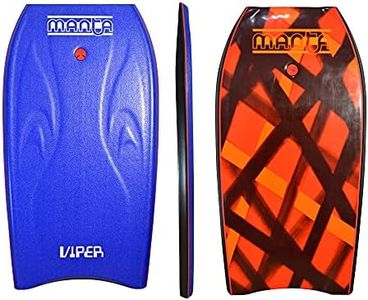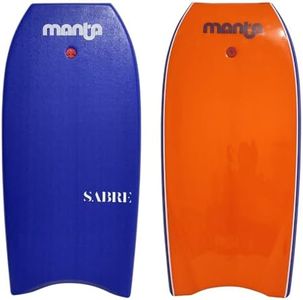We Use CookiesWe use cookies to enhance the security, performance,
functionality and for analytical and promotional activities. By continuing to browse this site you
are agreeing to our privacy policy
10 Best bodyboards
From leading brands and best sellers available on the web.By clicking on a link to a third party's website, log data is shared with that third party.
Buying Guide for the Best bodyboards
Choosing the right bodyboard is essential for making your time in the water safe, comfortable, and a lot more fun. The perfect bodyboard for you depends on your size, experience, and the type of waves you plan to ride. Understanding the major factors that differentiate boards will help you make a smart choice, so you can enjoy your sessions and progress your skills.Board SizeBoard size refers to the length of the bodyboard, usually measured in inches. The size is important because it affects your ability to control the board and how well it floats. A board that is too small might feel unstable and harder to paddle, while a board that is too large could be difficult to maneuver. Generally, if you hold a board upright in front of you, the top should come up to your belly button. Heavier or taller riders often need longer boards, while lighter or shorter riders benefit from shorter boards. Think about your height and weight to find a comfortable match.
Core MaterialThe core is what the inside of the bodyboard is made from, and it influences the board's flexibility and buoyancy. The two common core types are polyethylene (PE) and polypropylene (PP). PE cores are softer and provide more flex, making them ideal for cooler water and for beginners who want a more forgiving board. PP cores are stiffer and lighter, making them better for warm water and for riders seeking speed and more advanced tricks. Choose the core based on the water temperature you'll use the board in and your experience level.
Tail ShapeThe tail shape affects the board's movement and stability in the water. Crescent tails are rounded and offer more control, making them suitable for most riders, especially beginners and those who want to stick close to the wave's face. Bat tails have additional points and are looser, offering extra speed and maneuverability, which advanced or adventurous riders might prefer. Consider a crescent tail if you value control and ease of use; go for a bat tail if you're looking to try sharper turns and more radical maneuvers.
Deck and Slick MaterialsThe deck is the top of the board where you lie, while the slick is the smooth bottom surface that glides on the water. The deck is usually a type of soft foam for comfort and grip, while the slick is often made of materials like Surlyn or HDPE for speed and durability. Higher-end slicks like Surlyn are more durable and add performance, while HDPE is common in beginner boards for its affordability and adequate strength. Consider comfort and performance when deciding which materials work for you.
StringersStringers are rods or strips placed inside the board to add strength and stiffness. A board with stringers is more rigid and responds better in bigger waves, while a board without them is more flexible but less durable in rough conditions. If you're a beginner or ride gentle waves, you might not need a stringer, but if you plan to tackle more powerful surf, a board with stringers will give you better performance and longevity.
Channels and RailsChannels are grooves on the bottom that help improve control and grip on the wave, while rails are the edges of the board. Boards with pronounced channels and sharper rails tend to hold better on steeper waves, making them suitable for more experienced riders. If you’re just starting out, a simpler design with moderate rails and minimal channels will make learning easier and more forgiving.
LeashA leash is the cord that attaches the bodyboard to your wrist or arm, keeping it from drifting away if you fall off. Leashes are essential for safety, especially in stronger surf or busy beaches. Pick a leash that's comfortable and strong, and decide whether you want to wear it on your wrist or upper arm (bicep), with bicep leashes generally being more comfortable for longer rides.
